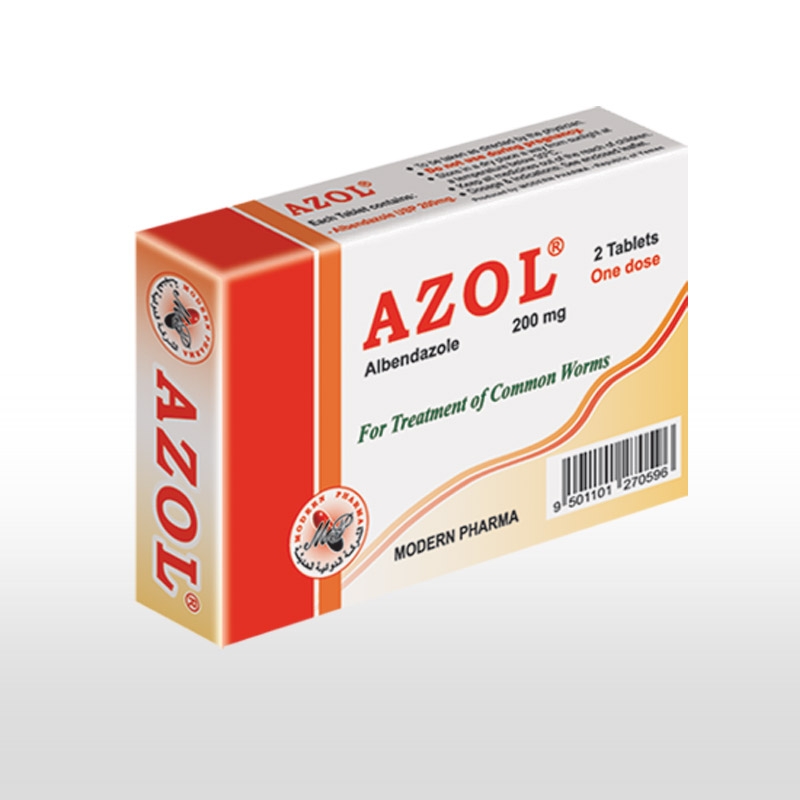Azol 200
-Albendazole is benzimidazole Carbamate anthelmintic, it’s activity is
considered to be dependent on the inhibition or destruction of cytoplasmic
microtubules in the worm’s intestinal or absorptive cells, thus inhibition of
glucose uptake and depletion of glycogen stores and cholinesterase
secretion are impaired, and ATP production decreases causing energy
depletion, immobilization following as do other inhibitory effects leading
to death of worm within several days.
- Albendazole is poorly absorbed from the gastro-intestinal tract ,but may
be enhanced by a fatty meal. But rapidly undergoes extensive first pass
metabolism. The principal metabolite Albendazole sulphoxide has
anthelmintic activity and a plasma half-life of about 8.5 hours.
-Albendazole sulphoxide is widely distributed throughout the body
including into the bile, cerebrospinal fluid, liver & urine. It’s
approximately 70% bound to plasma protein. Albendazole sulphoxide is
eliminated in the bile; only a small amount appears to be excreted in the
urine not less than 1% of the dose recovered in the urine.


